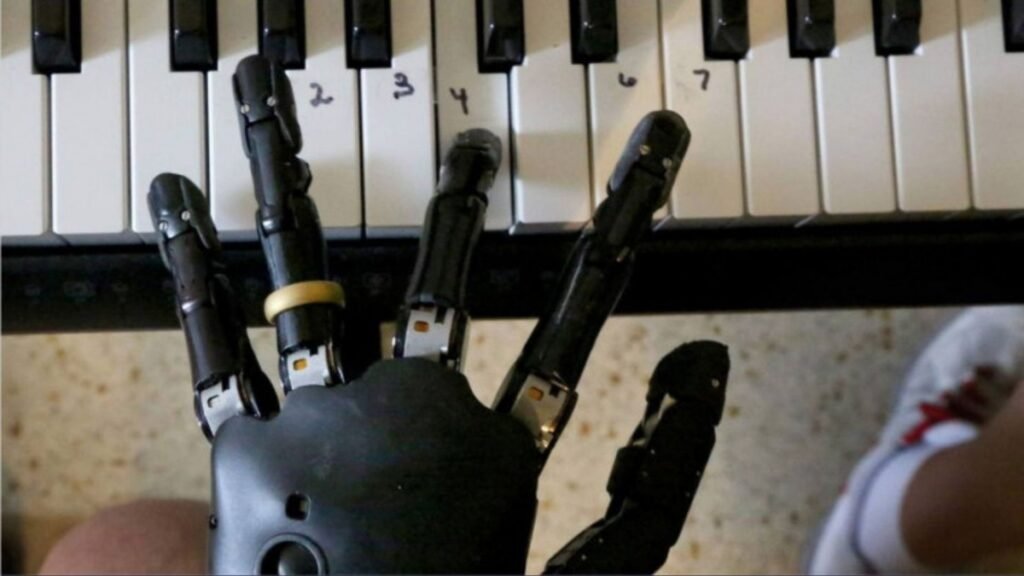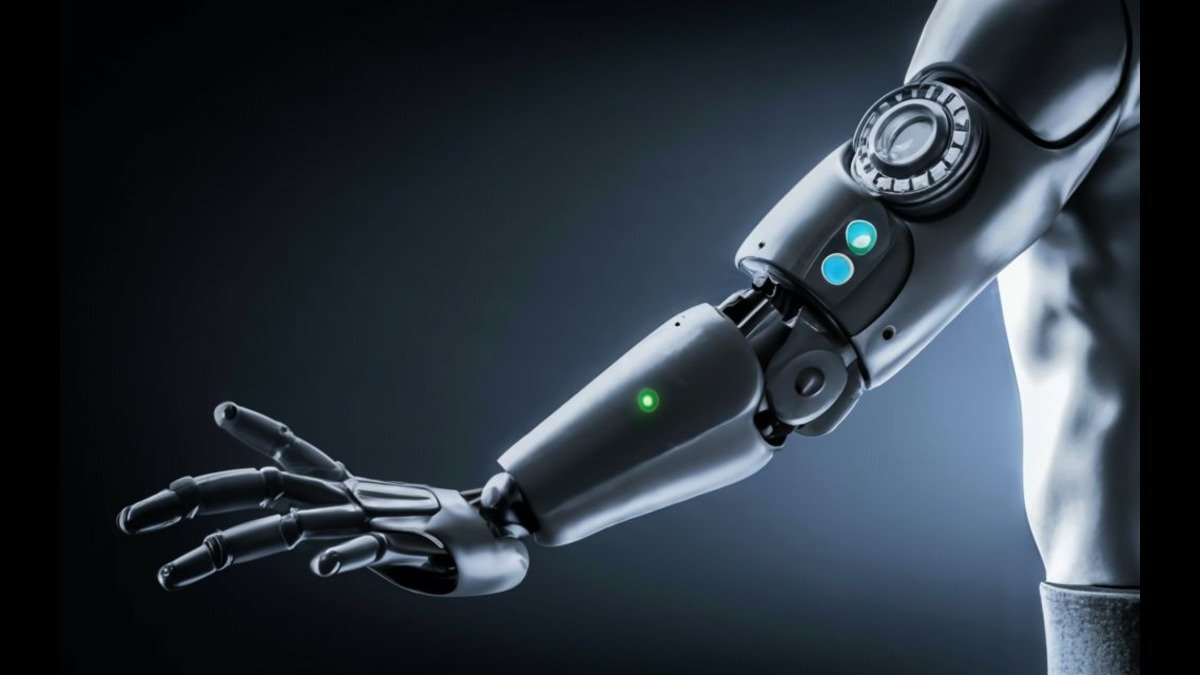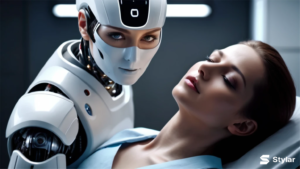
Table of Contents
The Future is Here: How AI is Revolutionizing Prosthetics
For amputees and those living with limb differences, prosthetics have long been an essential tool for maintaining mobility and independence. However, these devices often have significant limitations in function and cost. Now, the integration of artificial intelligence (AI) into prosthetic design brings the promise of a new level of intuitive control, flexibility, and access.
What is an AI Prosthetic?
AI prosthetics utilize advanced machine learning algorithms to enable more organic, adaptive movements. Rather than relying on manual inputs, they can interpret electrical signals from the brain and nerves to control motor functions. This allows for faster, more precise reactions that mirror natural human motion.
Some key examples of AI prosthetic companies pushing this technology forward include Atom Limbs, Open Bionics, and Neuralink. These pioneers leverage intelligent data analysis to optimize device performance and user experience.

Benefits of AI Prosthetics
- Enhanced Motor Control and Feedback
Unlike traditional prosthetics, AI-powered designs provide enhanced sensory information and haptic feedback. Their ability to recognize muscle contractions and nerve signals allows for a greater range of motion with less conscious effort from the user. They can adjust grip pressure, speed, angles – even switch between function modes as needed.
- Faster Processing and Response
By utilizing predictive algorithms, AI prosthetics can analyze inputs and initiate reactions faster than would be possible manually. This results in more seamless, real-time control – crucial for handling delicate or dynamic tasks. Reaction times closer to natural human reflexes also reduce the risk of damage or drops.
- Adaptability and Personalization
A major advantage of AI prosthetics is their capacity to continuously learn and adjust to the user’s individual needs. As they aggregate usage data, they can optimize to your strengths, reflexes, typical environments, and activities. This creates a fully customized experience.
Over time, some devices may even develop a user profile to enable easier switching control across multiple bionic limbs. This would allow amputees to outfit various arms or legs for different settings, while maintaining intuitive ease of use.
- Advanced Sensory Capabilities
Integrating touch sensitivity, temperature variation, pressure levels, and even simulated pain responses allows AI prosthetics to provide detailed sensory information. This enhanced feedback deepens the connection between device and user for better control. Some experimental models are also exploring the addition of other senses like proprioception – the ability to detect the position of your body parts.
- Reduced Costs and Access Barriers
Though still under development, many disruptive startups in the AI prosthetics space aim to leverage automation and design innovation to make their products more economically accessible. Modeling algorithms and 3D printing help streamline production. while machine learning optimization requires less manual tuning over a device’s lifetime.
As more advanced functionality gets absorbed into software rather than hardware, prices for some models could eventually decrease to under $5,000. This improved availability helps tear down existing healthcare barriers for obtaining assistive devices.

What is more to come in The Future of Prosthetics?
Integrating reactive artificial intelligence and extensive sensory feedback paves the way for a more intuitive, liberating user experience. As pioneers continue to push boundaries in this market, AI prosthetics bring us steps closer to fully integrated bionic limbs.
What once seemed like science fiction is steadily becoming reality. These devices harbor the tremendous potential to transform mobility and independence for amputees and limb-difference communities. The possibility to lead more active lifestyles through technologies cognitively and physically attuned to their users delivers the promise of societal as well as scientific progress.
What is Atom Limbs?
Atom Limbs is a company that is developing advanced prosthetic technology, including a next-generation bionic arm that uses artificial intelligence and machine learning to provide a full range of human motion in the elbow, wrist, and individual fingers. The arm is non-invasive and connects to the wearer’s residual limb via sensors that measure electrical signals and a cup that fits over the top, with the arm connecting via an interface. The company is also developing the world’s first mind-controlled prosthetic human arm, which can imitate the natural limb’s instinctive movements and enable people to move their hands naturally, allowing them to grip, grasp, push, pull, and perform many other actions with Atom Touch, including typing with just a thought. Atom Limbs recently raised over $3.5 million from more than 2,400 retail investors through equity crowdfunding on Wefunder
Limitations of Traditional Prosthetics that are overcome by AI
Limited functionality and control: Traditional prosthetics typically have limited functionality and control compared to AI prosthetics.
Lack of sensory feedback: Traditional prosthetics often lack sensory feedback capabilities
Inability to adapt and learn: Traditional prosthetics do not have learning capabilities or adaptability like AI prosthetics
Socket-related issues: Poorly fitting sockets can cause long-term structural changes in the body that result in muscular pain and back pain
Skin issues: As many as 74% of amputees have skin issues associated with prosthetic wear, such as contact dermatitis, excessive sweating, and scar management
Osteoarthritis: Traditional prosthetics can cause osteoarthritis when joints become painful or stiff
Adductor roll: The retraction of muscles that are no longer held into place can occur with traditional prosthetics
It is important to note that traditional prosthetics have their own advantages and are still widely used. However, AI prosthetics offer several improvements over traditional prosthetics

Limitations of AI Prosthetics
Artificial intelligence (AI) has made significant strides in the field of prosthetics, but it’s essential to recognize its limitations. Here are some challenges associated with AI-powered prosthetics:
Sensory Feedback: One major challenge is the lack of accurate and real-time sensory feedback. While AI can control prosthetic limbs, providing natural sensations like touch or proprioception remains difficult.
Adaptability and Customization: Each individual’s needs and preferences vary. AI prosthetics require customization and adaptability to suit different users. Achieving a balance between personalized adjustments and ease of use is crucial.
Complexity of Movement: Human movement involves intricate coordination of muscles, joints, and sensory input. Replicating this complexity in AI prosthetics is challenging. Fine motor skills, delicate gestures, and precise control remain areas of improvement.
Cost and Accessibility: AI technology often requires significant investment in hardware, software, and training. The cost can be a barrier for widespread adoption, especially in regions with limited resources.
Ethical Considerations: As AI prosthetics become more advanced, ethical questions arise. For instance, how much autonomy should the AI have in decision-making? Balancing safety, user control, and privacy is essential.
Despite these limitations, ongoing research and advancements continue to enhance AI prosthetics, improving the quality of life for individuals with limb loss or mobility impairments.




